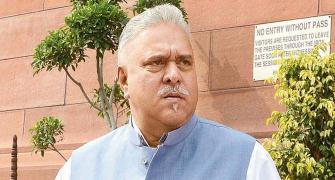It accounted for over a third of foreign direct investment flows into India between 2000 and 2015

The “Mauritius route”, which has long bedevilled India’s attempts to chase down black money and to introduce greater transparency into its financial sector, is finally set to become history.
Thanks to a three-decade-old favourable double tax avoidance agreement (DTAA) with the small Indian Ocean island, it had become the favoured source for capital inflows into India. It accounted for over a third of foreign direct investment flows into India between 2000 and 2015.
Some of that must have been regular global capital taking advantage of favourable routes into the Indian markets. But the suspicion persisted that a great deal of it was “round-tripping”, or black money flowing back into India.
But now the government has, after renegotiating the treaty, gained the ability to tax capital gains arising in Mauritius from the sale of shares bought after April of 2017. The benefits from the treaty were also limited by the amendment.
A clause in the new protocol seeks to ensure that shell companies can no longer take advantage of the DTAA - only companies spending more than Rs 27 lakh in Mauritius itself in the preceding 12 months can take advantage of the DTAA.
A protocol amending the DTAA was signed by India and Mauritius on Tuesday in the island’s capital. It has been carefully structured to create minimal disruption, with the tax rate in the first two years being only half the normal rate; the full tax rate will only be applied from the 2019-20 financial year.
The government deserves considerable credit for closing down this loophole, which has long been identified as a problematic exemption at a time when India’s stated intention is to go after black money.
Earlier efforts to close it came to naught, supposedly for fear of the turmoil it would cause in the stock markets. However, as news of the treaty amendment broke, while the markets did not react positively, they did not lose their calm either.
Partly that must surely be because it appears to observers that this is far from a knee-jerk response, but instead a considered move to close the loophole. The gradual imposition of tax, and its prospective nature, has done much to keep the markets calm, since it allows for legitimate companies to change their tax plans in time.
So, while it is true that the government had to move in this direction thanks to it having signed up to the base erosion and profit shifting (BEPS) action plan of the Organisation for Economic Cooperation and Development (OECD), it nevertheless deserves full credit for having planned and implemented the move with precision.
Attention must now shift to other low-tax jurisdictions with which India has similar setups. Fortunately, the tax exemption treaty with Singapore, which immediately follows Mauritius as a source of such funds, is linked to the Mauritius DTAA.
Now that the Mauritius route has been closed, it is the beginning of the end for similar benefits for investments from Singapore also. It is to be hoped that, with the modification of the DTAAs and the approaching implementation of the General Anti-Avoidance Rules or GAAR, that India’s tax system is finally moving into the 21st century.
Photograph: Reuters










